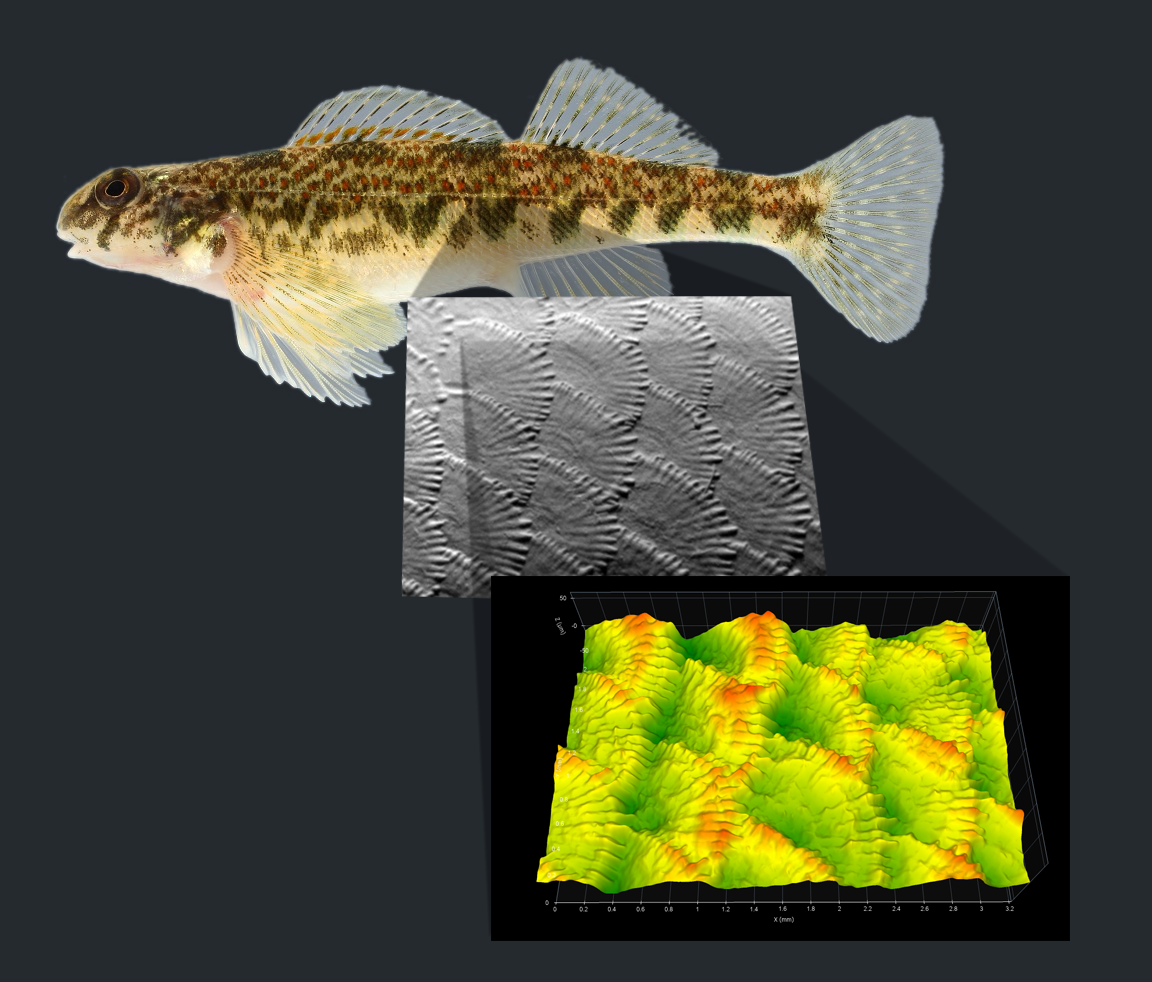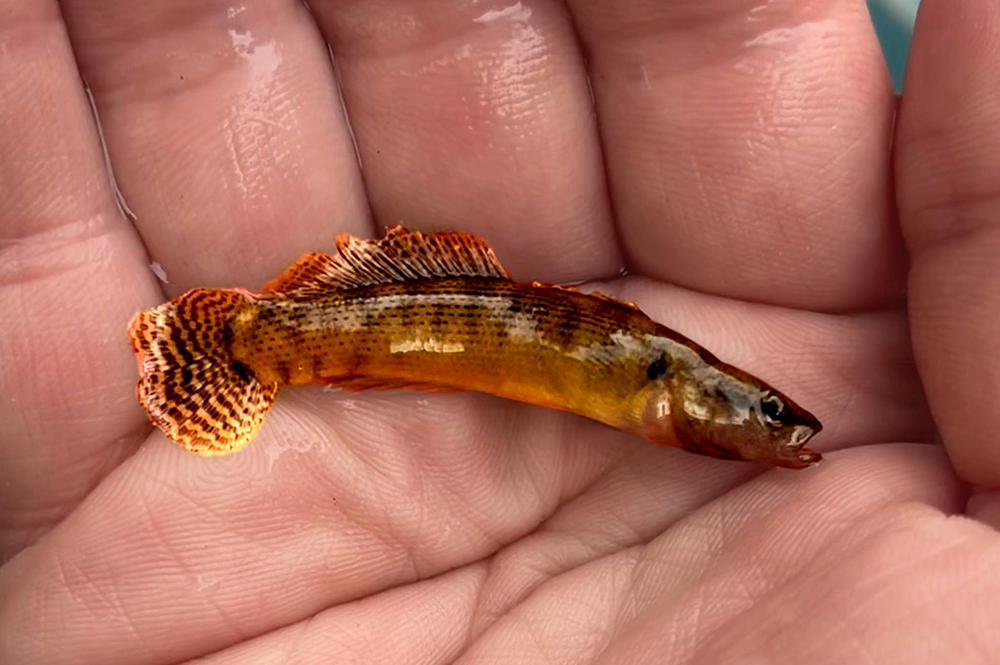
What can surface texture tell us about how biological communities evolve?
Dr. Jessica Arbour and her team at Middle Tennessee State University studies differences in morphology (physical traits). Their goal is to better understand why some species “stay with one biological plan” while others explosively diversify into many new forms.
Arbour has studied many different species, including post-doctoral work with bats, yet she says she remains “a fish person at heart.” Much of her current research involves darters, small fish related to perch which thrive in fast-moving water. The surface texture of the darters’ scales is of particular interest. Small spikes known as ctenii at the trailing edge of the scales help to reduce drag, in darters and in many species. But do darters change the properties of these 10–15 µm features to give them an advantage in fast-moving water?

The hot, difficult work of collecting specimens, and the scarcity of some species, is strong incentive to use only non-destructive measurement techniques.

Arbour’s team in the field, acquiring specimens using an electrofishing unit affectionately known as the “Proton Pack.” Graduate students Delaney Gilley (left), Natalie Schroth (right) and Sarah Clark (not pictured) spent countless hours carefully acquiring darter specimens this summer (Courtesy Jessica Arbour, Sarah Clark and Middle Tennessee State University)
Dr. Arbour’s cites another fish morphologist, Dr. Dylan Wainwright1, as the inspiration for her work with 3D surface texture. Wainwright contributed to the development of the GelSight, a portable 3D surface analysis system. He also pioneered the use of the GelSight for 3D morphology. “Wainwright’s work revealed all this diversity no one had looked at,” says Arbour. She and her team are now using it to measure the scales of their darter specimens.

Analyzing the data, however, has proved to be another challenge. The first analysis software that Arbour tried “seemed very black box,” with many hidden options and no clear explanation of their purpose or effect. The price was also a concern. “As a state institution we have startup funds and can apply for external grants, but we are not a big R1 school, so we need to be conscious of money.”
Her search for better-suited analysis software led her to Digital Metrology, and to a phone conversation with Dr. Mark Malburg. “It’s always fun to talk to another geek,” said Arbour. “I always appreciate when talking to someone who is enthusiastic about their thing.”
The two began to collaborate on how best to analyze the data. The built-in tools in the OmniSurf3D software made it simple to remove the complex shape of the fish body so they could focus on the scales. “It is a super-slick program. I was able to walk through everything so easily with the notes I took from our talk. I found it easier to play with parameters and understand their functions.”
Also based on that phone call, the Digital Metrology team added a new tool to acquire data along a curved feature. “They made a special tool to measure right on the trailing edge of scales,” said Arbour. “Now I’m off to the races, looking at all of our data from our field work this summer.”

Note: The dataset above is available in our Surface Library if you would like to try the Path/Curve Cross-Section tool for your self.
Using OmniSurf3D and OmniSurf (2D), Dr. Arbour and her undergraduate assistant, Valerie Davis, have found that parameters such as skewness and kurtosis, along with the roughness of the scales, change significantly over the life of an individual. This data will help to show how the darters’ scale morphology changes as it moves from calmer waters in youth to faster riffles and rapids in adulthood. It may also provide a jumping-off point for a larger study project that may involve more species from the region.

Dr. Arbour appreciated the assistance that Dr. Malburg provided in helping her analyze the surface texture data. “He is so knowledgeable and makes it very understandable. He can describe it in terms that work cross-field. The OmniSurf3D software is easy to tailor to my study system. And, the price is so much more reasonable for a researcher like me.”
Dr. Jessica Arbour’s pilot program research described here is supported by a URECA grant from MTSU.
GELSIGHT is a trademark of GelSight, Inc.
